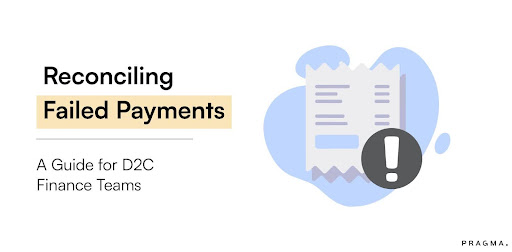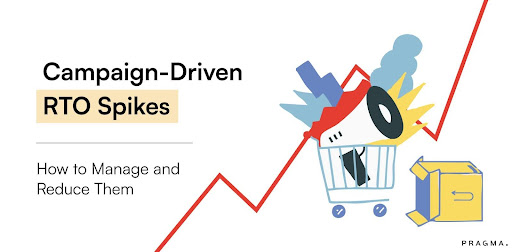As we zoom into 2024, the Indian D2C landscape continues to evolve at lightning speed. Staying ahead of the game is crucial, but equally important is knowing the fundamental do’s and don’ts.
Let’s break down what’s hot and what’s not for D2Cs in 2024.
Do: Customise Return Management
Abuse of returns imposes an annual cost of up to ₹1176.6 Crores on merchants every year.
Why? Because brands do not consider customising return management - customising for their individual products, locations, consumer age groups etc.

Don’t: Go For “Perfect”
..when it comes to product, logistics, packaging etc. Because nevertheless, returns will be unavoidable... Especially in India, as customers love the flexibility offered by brands.
Instead, try to..
👇
Do: Embrace Automation More Than Ever
It gets easier to avoid dissatisfaction among your customers when brands react with immediacy, meaning…
1️⃣ Switch to AI enabled Chatbots
2️⃣ Stay updated in real time
3️⃣ Ensure a seamless loop between Brand ↔ Customer ↔ Logistic Partner
Don’t: Ignore The Power of Tech
Gone are the days of complexity and manual tasks.
Now we have simplicity & way fewer manual tasks (we’re getting there though, 92% Automation of a brand achieved, 100%, here we come)
We have Ecommerce Dashboards to monitor things from a single place.
We have Omnichannel CRM to access multiple channels from a single place.
And we have a D2C Operating System to manage end-to-end Customer Journey.
Do: Dive Deep Into Data Analytics
Data is your best friend. Use analytics to understand audience behaviour, preferences, and trends. Tailor your content accordingly. The more targeted your strategy, the better the results.
Data that is crucial:
1️⃣ Location Data
2️⃣ Competitor Data
3️⃣ Checkout Data

Don’t: Spam Your Audience with Salesy Content
Nobody likes to be bombarded with constant sales pitches. Balance your promotional content with informative, entertaining, and engaging posts.
Remember, it's about building a community, not just pushing a product.
That’s where RFM Automation comes in.
Do: Monitor ROI Across Stages
This is basically how you measure profitability and efficiency. It is the pragmatic approach to assign funds to any particular stage of the customer journey.
Why? Because it would be a really bad idea to spend if you are not going to get something in return.
Don’t: Forget Performance Reports
This is the last one, and it should be an obvious one.
Because performance reports are how you stay consistent as a brand, they keep you on your toes, prepared for what could come next.
Not to show-off, but, here’s our 2023 D2C Report 😉

Apart from the above, let’s talk about do’s and don’ts for a few everyday D2C brand essentials, shall we…
1. Website and Mobile Optimization
Do's:
Implement Advanced Analytics Tools
- Strategy: Integrate sophisticated analytics platforms to derive deeper insights into customer behaviours and preferences.
- Example: Use Google Analytics 4 to track user interactions in real-time, enhancing customer journey mapping.
- Statistical Benefit: Brands using advanced analytics have seen a 30-40% increase in marketing efficiency.
Impact of Analytics on Marketing Efficiency

Don't:
Overlook Mobile User Experience
- Risk: Poor mobile UX can lead to a significant drop in customer engagement and conversions.
- Statistical Loss: A 1-second delay in mobile load times can reduce conversions by up to 20%.
Mobile Load Time vs. Conversion Rate

2. Customer Data Utilisation
Do's:
Leverage AI for Personalized Marketing
- Strategy: Utilise AI-driven tools to create personalised marketing campaigns based on customer data insights.
- Example: Deploy AI to segment users based on their purchasing behaviour and send tailored emails.
- Quantitative Gain: Personalization can increase email campaign effectiveness by up to 70%.
Effectiveness of Personalization in Email Campaigns

Don't:
Neglect Data Privacy and Security
- Risk: Failing to protect customer data can lead to legal repercussions and damage to brand reputation.
- Technical Requirement: Ensure compliance with India’s Personal Data Protection Bill by implementing stringent security measures.
Data Breach Impact on Brand Reputation

3. Supply Chain Optimization
Do's:
Adopt Real-time Inventory Management Systems
- Strategy: Implement real-time inventory tracking to optimise stock levels and reduce carrying costs.
- Example: Use RFID technology to track inventory movements and availability accurately.
- Operational Efficiency: Real-time tracking can reduce out-of-stock scenarios by up to 75%.
Impact of Real-time Inventory Management on Stock Levels

Don't:
Ignore Advanced Forecasting Techniques
- Risk: Poor forecasting can lead to overstocking or stockouts, impacting profitability.
- Strategic Misstep: Utilise predictive analytics to forecast demand more accurately, thereby optimising procurement and production schedules.
Forecasting Accuracy vs. Cost Savings

4. Marketing and Customer Engagement
Do's:
Implement Omnichannel Marketing Strategies
- Strategy: Create a seamless customer experience across all channels, including social media, email, and physical stores.
- Example: Use CRM systems to integrate customer data from multiple sources for a unified marketing strategy.
- Statistical Gain: Omnichannel customers spend 10% more online and 4% more in-store than single-channel customers.
Omnichannel Customer Spending

Don't:
Ignore Customer Feedback
- Risk: Failing to incorporate customer feedback can lead to missed opportunities for improvement and innovation.
- Strategy: Regularly collect and analyse customer feedback through surveys, reviews, and social media interactions.
Customer Feedback and Business Improvement

5. Payment and Checkout Process
Do's:
Optimise Checkout Process
- Strategy: Simplify the checkout process with features like one-click checkout, multiple payment options, and autofill capabilities.
- Example: Amazon’s one-click checkout significantly reduces cart abandonment rates.
- Impact: A streamlined checkout process can reduce cart abandonment rates by up to 30%.
Checkout Optimization Impact

Don't:
Overcomplicate Payment Options
- Risk: Offering too many payment options can overwhelm customers and increase checkout time.
- Strategy: Focus on popular and widely used payment methods in India, such as UPI, debit/credit cards, and digital wallets.
Preferred Payment Methods in India

6. Logistics and Delivery
Do's:
Optimise Last-Mile Delivery
- Strategy: Use route optimization algorithms to enhance delivery efficiency and reduce costs.
- Example: Implement solutions like Locus or FarEye to improve delivery routes and times.
- Efficiency Gain: Optimised routes can reduce delivery times by up to 20% and logistics costs by 15%.
Last-Mile Delivery Optimization Impact

Don't:
Ignore Delivery Partner Performance
- Risk: Poor performance from delivery partners can lead to customer dissatisfaction and increased return rates.
- Strategy: Regularly review and assess delivery partner performance using KPIs like on-time delivery rate and customer feedback.
Delivery Partner Performance Impact on Customer Satisfaction

7. Customer Support
Do's:
Implement Multi-channel Customer Support
- Strategy: Provide customer support through various channels such as chat, email, phone, and social media to cater to different customer preferences.
- Example: Use platforms like Zendesk or Freshdesk to manage and unify customer support interactions.
- Customer Satisfaction: Multi-channel support can improve customer satisfaction scores by up to 25%.
Multi-channel Customer Support Impact

Don't:
Delay Response Times
- Risk: Slow response times can frustrate customers and damage brand loyalty.
- Strategy: Use automated responses and prioritise urgent queries to maintain quick and effective communication.
Response Time vs. Customer Satisfaction

8. Content and SEO
Do's:
Invest in High-Quality Content
- Strategy: Develop high-quality, relevant content to engage your audience and improve SEO rankings.
- Example: Create blog posts, videos, and infographics that address customer pain points and interests.
- SEO Impact: High-quality content can improve organic traffic by up to 50%.
Impact of High-Quality Content on SEO

Don't:
Overlook Technical SEO
- Risk: Ignoring technical SEO aspects can lead to lower search engine rankings and reduced visibility.
- Strategy: Ensure your website is optimised for speed, mobile-friendliness, and proper indexing by search engines.
Technical SEO Factors Impacting Search Rankings

9. Customer Retention Strategies
Do's:
Implement Loyalty Programs
- Strategy: Develop a robust loyalty program to reward repeat customers and encourage long-term engagement.
- Example: Offer points for purchases that can be redeemed for discounts or exclusive products.
- Retention Rate: Brands with loyalty programs see an average increase in customer retention by 15-25%.
Impact of Loyalty Programs on Customer Retention

Don't:
Neglect Post-Purchase Engagement
- Risk: Failing to engage customers after their purchase can lead to reduced repeat business.
- Strategy: Send follow-up emails, request reviews, and offer complementary products or services.
Post-Purchase Engagement Impact on Repeat Business

10. Market Research and Competitor Analysis
Do's:
Conduct Regular Market Research
- Strategy: Perform regular market research to stay updated with industry trends and customer preferences.
- Example: Use tools like SurveyMonkey or Google Forms to gather customer insights and analyse market conditions.
- Business Growth: Companies that conduct regular market research grow 3-4 times faster than those that don’t.
Impact of Market Research on Business Growth

Don't:
Ignore Competitor Strategies
- Risk: Neglecting competitor analysis can leave you blind to market shifts and new opportunities.
- Strategy: Regularly review competitors’ products, pricing, and marketing strategies to identify strengths and weaknesses.
Competitor Analysis Impact on Market Position

Conclusion
Navigating the D2C e-commerce landscape in India in 2024 requires a blend of strategic innovation and meticulous execution. Implementing the right strategies can dramatically enhance your brand’s performance and customer satisfaction.
The following compelling data points should emphasise its importance, if not already:
- Advanced Analytics: Brands leveraging advanced analytics tools report a 30-40% increase in marketing efficiency and a 20% improvement in customer retention rates
- Mobile Optimization: A mere 1-second delay in mobile load times can slash conversion rates by up to 20%
- Personalized Marketing: AI-driven personalised marketing campaigns can boost email effectiveness by 70%, translating into higher engagement and conversion rates
- Real-time Inventory Management: Utilising real-time inventory tracking can reduce out-of-stock situations by 75% and enhance inventory turnover by 35%
- Omnichannel Strategies: Omnichannel customers tend to spend 10% more online and 4% more in-store compared to single-channel shoppers, highlighting the value of an integrated marketing approach
- Customer Support: Providing multi-channel customer support can increase customer satisfaction by up to 25%, reinforcing the importance of accessible and efficient customer service
- Loyalty Programs: Implementing robust loyalty programs can elevate customer retention rates by 15-25%, underscoring the significance of rewarding repeat customers
- Market Research: Companies conducting regular market research grow 3-4 times faster than those that don’t, emphasising the critical role of staying informed about industry trends and consumer behaviour
Adopting these best practices, and taking all the Do’s and Don’ts into serious consideration - a pragmatic D2C brand is born, achieving sustainable growth and long-term success in 2024 and beyond.

FAQs (Frequently Asked Questions On Do's & Don'ts for D2C 2024)
1. Why is customising return management important for Indian D2C brands?
Customising returns by product, location, and customer segments reduces losses worth ₹1176.6 Crores annually and enhances customer satisfaction through tailored policies.
2. How does automation improve D2C operations?
AI-enabled chatbots and real-time updates streamline brand, customer, and logistics partner communication, reducing response times and boosting customer loyalty.
3. What role does data analytics play in brand growth?
Leveraging location, competitor, and checkout data enables targeted marketing and operational efficiencies, driving better customer engagement and higher ROI.
4. Why is mobile optimisation critical for D2C success in India?
A 1-second delay on mobile can cut conversions by 20%, making seamless mobile UX essential for maximising engagement and sales.
5. What are the best practices for optimising checkout?
Simplify checkout with one-click options and limit payment methods to popular ones like UPI and cards to reduce cart abandonment by up to 30%.
6. How do loyalty programs affect Indian D2C brands?
Effective loyalty schemes increase retention by 15-25%, turning one-time buyers into repeat customers through rewards and personalised offers.
Talk to our experts for a customised solution that can maximise your sales funnel
Book a demo




.png)